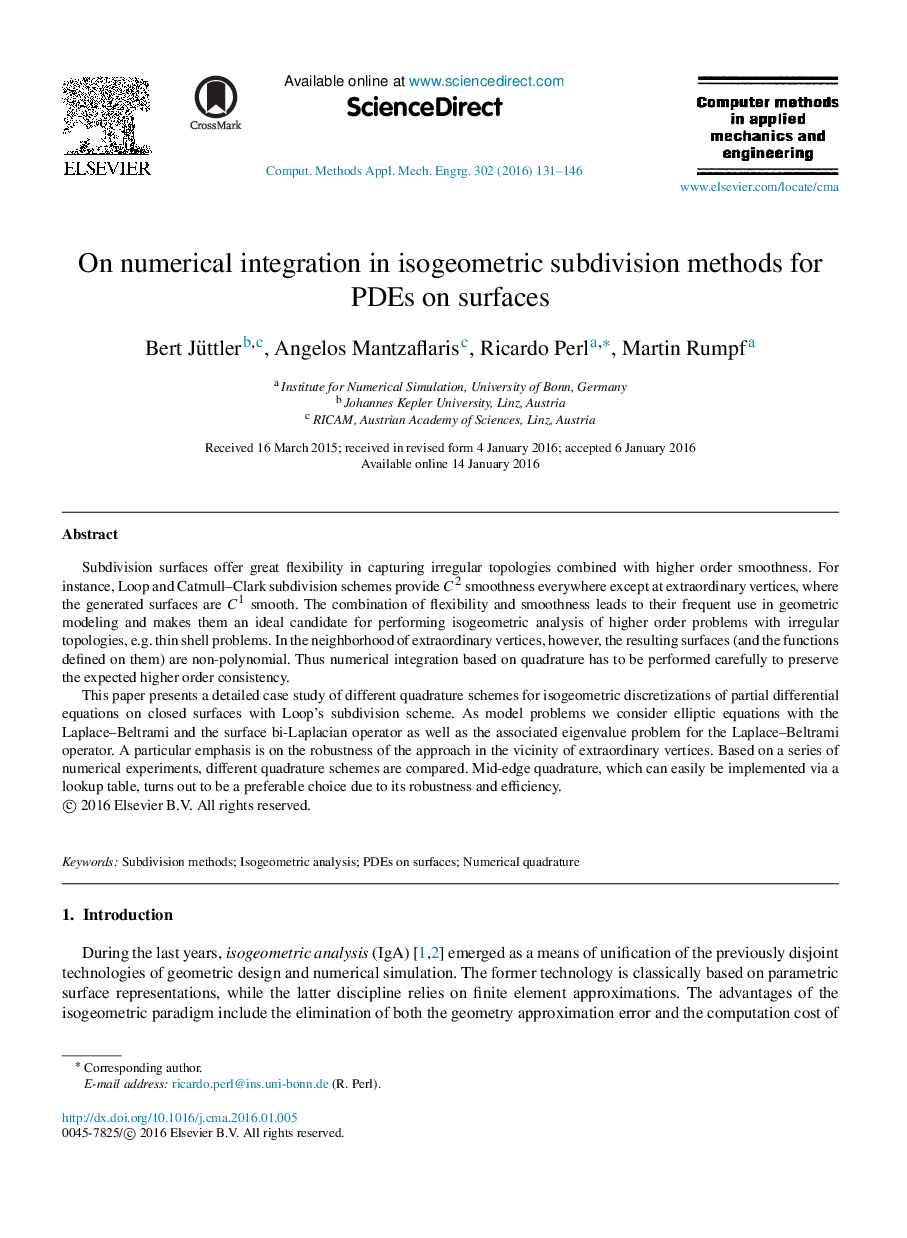| Article ID | Journal | Published Year | Pages | File Type |
|---|---|---|---|---|
| 497619 | Computer Methods in Applied Mechanics and Engineering | 2016 | 16 Pages |
Subdivision surfaces offer great flexibility in capturing irregular topologies combined with higher order smoothness. For instance, Loop and Catmull–Clark subdivision schemes provide C2C2 smoothness everywhere except at extraordinary vertices, where the generated surfaces are C1C1 smooth. The combination of flexibility and smoothness leads to their frequent use in geometric modeling and makes them an ideal candidate for performing isogeometric analysis of higher order problems with irregular topologies, e.g. thin shell problems. In the neighborhood of extraordinary vertices, however, the resulting surfaces (and the functions defined on them) are non-polynomial. Thus numerical integration based on quadrature has to be performed carefully to preserve the expected higher order consistency.This paper presents a detailed case study of different quadrature schemes for isogeometric discretizations of partial differential equations on closed surfaces with Loop’s subdivision scheme. As model problems we consider elliptic equations with the Laplace–Beltrami and the surface bi-Laplacian operator as well as the associated eigenvalue problem for the Laplace–Beltrami operator. A particular emphasis is on the robustness of the approach in the vicinity of extraordinary vertices. Based on a series of numerical experiments, different quadrature schemes are compared. Mid-edge quadrature, which can easily be implemented via a lookup table, turns out to be a preferable choice due to its robustness and efficiency.
